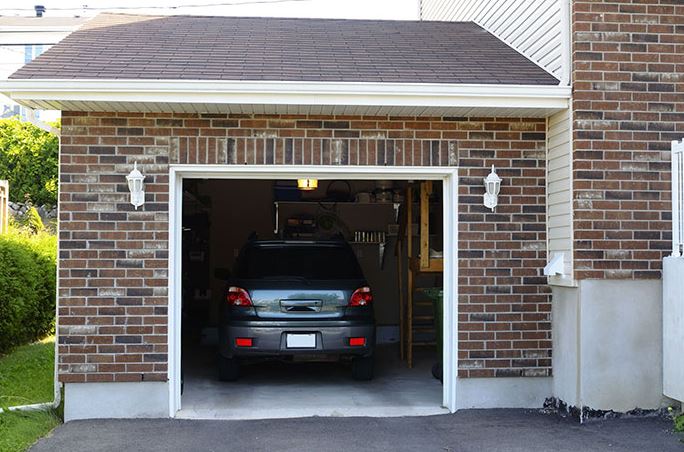
This article will discuss the differences between Hellcat and Scat Pack, their interiors, 0-60 times, engine power and price. You'll also learn how each of these cars performs on the track. This article will help decide what car you want to buy based on your personal preferences. After reading this article, you'll be well-prepared to make an informed decision.
Interior differences
Despite being similar in engine and exterior configurations, Hellcat and Scat Pack have completely different interiors. While the Scat Pack has a more refined interior, the Hellcat has a more aggressive one. The Hellcat Widebody is equipped with stronger front springs and wider sway bars. Both use Bilstein adaptive shock absorbers. The Hellcat has an improved suspension system which is better suited for tight turns and aggressive tracks.
The starter switches for the Hellcat and Scat Pack are also different. The Scat Pack has a yellow starter switch, while the Hellcat uses a red one. Hellcats have Superbee logos embroidered on the seatbacks, and a 392 plaque with their logo. Daytona Special Edition models include Daytona logos on both their dashboards and the front seats. Even though Hellcat models come with different steering wheels, the materials remain the same.

Time range: 0-60
The Dodge Challenger Hellcat is faster than the Dodge Charger Scat Pack, in terms of 0-to-60 speeds. The Charger has a naturally aspirated 6.4-liter V8 which produces 485 horsepower. 475 lb.ft. of torque. The Hellcat, on the other hand, is powered with a supercharged Hemi 6.2-liter V8. Although the Hellcat's 0-60 times are slightly quicker at 3.6 seconds, this difference is not significant, especially for those who intend to drag-race their car. Both cars are comfortable and luxurious. However, the interiors of each car differ.
Scat Pack and Hellcat have a higher BMEP but are still powerful. The Hellcat is quicker than a Dodge Charger SRT Hellcat and can cover a quarter mile in just eleven seconds. Although the Hellcat is not as powerful, the Scat pack is still a practical option for those who desire maximum power and a low price.
Engine power
The Hellcat's 707 horsepower, 485 horsepower make it the clear winner. However, the Scat Pack provides the same performance and torque for a much lower price. The car comes standard with an 8-speed automatic transmission as well as rear-wheel drive. The Hellcat's engine was designed to handle higher torque loads. A limited-edition SRT Widebody Daytona 50th Anniversary version of the Hellcat is also available.
Hellcat Widebody is a 707 horsepower vehicle with 475 lb-ft torque. It also has adjustable active dampers. Both vehicles are equipped both with limited slip differentials and a 3.09 rear axle. The Hellcat can go from 0-60 mph in just four seconds. If you plan on drag racing, however, this is an important consideration.

Prices
The Hellcat Pack shares many characteristics with the Scat Pack when comparing performance within the same class. Both models come standard with EPS, enhanced steering and handling. The Hellcat comes with an 8.4-inch Uconnect touchscreen and paddle shifters, making it easy to adjust the transmission, horsepower, and steering. Both vehicles use Bilstein adaptive shock absorbers. The Hellcat is quicker than its Scat Pack opponent and more powerful.
The Scat Pack trim level is powered by a 6.4-liter HEMI V8 engine, which is shared with heavy-duty Ram trucks, the Grand Wagoneer, and the Jeep Wrangler. The Dodge Hellcat can produce 485 horsepower and the Jeep Wrangler a HEMI with 470 horsepower. Both Charger and Scat Pack models feature factory widebody kits and SRT-tuned Bilstein suspension. Both have wide tires, which improve acceleration and braking.
FAQ
What qualifications do I need to become a mechanic?
A series of tests is required to be a mechanic. These include:
-
A general knowledge test
-
Practical exam
-
An apprenticeship test
These tests are designed to ensure that you understand the basic concepts of mechanical engineering and physics before you start working as a mechanic.
Once you've passed these tests, you'll be eligible to work as a mechanic. You will still need to complete an apprenticeship. This will require you to learn the trade.
You'll need to attend classes and workshops to learn everything you need to know about repairing vehicles. Experienced mechanics will also be required.
For mechanic success, you'll need to be focused and meticulous. You will need to pay careful attention to every aspect when repairing vehicles.
To be a successful mechanic, you will need patience and perseverance. If you don’t love to follow instructions, this may not the right career path.
You could make a great career out of your love for cars and the work that goes into fixing them.
What qualifications does a truck mechanic need?
This job requires you to be a skilled mechanic, although you do not need any formal training. Your experience is valuable because it allows you to diagnose problems quickly, efficiently and effectively.
Also, your knowledge of diesel technology will be a benefit as you can help us understand which parts are needed for our vehicles.
What is the difference between an automotive technician and a mechanic?
They are both similar, but not identical. An automotive technician maintains cars, while a mechanic repairs them.
A mechanic must have good manual dexterity and be able to perform simple tasks quickly. They should be able to accurately diagnose problems and repair them efficiently.
An automotive technician is required to have more technical knowledge than a mechanic. They must be capable of reading blueprints and using tools such as drills, wrenches, etc.
They must also be able perform complex procedures safely. They must also be familiarized in different types and electrical systems.
They should also be able understand how different parts interact.
This means that mechanics usually make less money than automotive technicians. There are many job opportunities in both.
What length of an automotive course is it?
An automotive course lasts 3 years.
The first year is spent on theory, learning all about cars. The second year is spent on practical training where you learn how to drive, fix engines, and do other mechanical jobs around the car. The final year is spent doing a placement at a local garage, which gives you experience in fixing real-world problems.
How do I fix my car for a hobby?
Why not make it a hobby if you're interested in cars? You can learn to fix them, buy them parts, and even sell them. It would make a great pastime if you're looking for something different to do.
However, it's not easy to turn this into a full-time career. This requires dedication and hard work. And you'll need to invest a lot of money too.
You might not have a compelling reason to get involved in the car industry.
How long does it take to become a good mechanic?
You need to have years of experience and practice before you can become a master mechanic. The best way to learn how to repair cars is by working under the supervision of a professional mechanic.
You'll have to spend time at a garage learning all you can about cars and mechanics. Mechanical engineering books will be required to learn about mechanics and design.
Additionally, you will need to attend an auto school.
The most important thing is to start early. To learn about automotive technology, don't wait to be older. Do you want to be a mechanic? Get started today!
Is it hard being a mechanic apprentice
It's not simple, but you can learn quickly and there are many avenues for advancement.
You must have patience and perseverance. You will also need to be able fix cars, trucks and motorcycles.
Customers and family members will put pressure on your shoulders to help you succeed. However, you shouldn't be forced to make difficult decisions.
If you enjoy fixing cars, it could be a great career choice. It's a job where you can earn a decent salary and build up your business.
But you may prefer another path. You might consider becoming a technician in this instance.
This is where you use your technical skills to support other workers. This could be a way to help technicians with their problems or to teach them new techniques.
Another option is to become an advisor in service. Here, you'll provide advice and assistance to customers when they bring their cars to a garage.
It all depends on your goals. There are many options to choose from, and it is up to you which one suits you the best.
Statistics
- The U.S. Bureau of Labor Statistics (BLS) reports that the job outlook for automotive service technicians and mechanics is expected to decline by 4% from 2019 to 2029. (indeed.com)
- Apprentice mechanics earn significantly less hourly than mechanics who have completed training, with a median wage of approximately $14.50 an hour, according to PayScale. (jobhero.com)
- 52% of Mechanics in the United States think their salaries are enough for the cost of living in their area. (indeed.com)
External Links
How To
How to properly diagnose your vehicle for repair
Before you can determine if your car requires repairs, it's important to first analyze the symptoms. Then, follow these steps to diagnose your vehicle properly.
-
Check engine lights. The dashboard light indicators, including the engine light, oil pressure gauge, battery light indicator, coolant temperature gauge and RPM gauge, should be checked. If they have been flashing for more days than usual, it could be a sign that something is wrong with the vehicle.
-
Inspect the tire treads. Tire wear can lead to problems in handling and brake performance. The treads of the wheels should be inspected as well. They should be smooth and clean. This can be done by removing the wheels from the vehicle and taking them off. You can check the tread wear with a flashlight.
-
Pay attention to the level of your brake fluid. You must keep track on the level of brake fluid in your vehicle. This ensures that your brakes work properly. Low brake fluid levels can cause brake failure when you apply pressure.
-
Check the suspension system. Most vehicles have a suspension system that absorbs shocks and vibrations. It improves control and allows for smoother accelerations or decelerations. If your vehicle has a suspension problem, it might feel wobbly or shake uncontrollably. You can test if your vehicle has a suspension problem by putting weight on either the front or back axle to see how it moves.
-
Examine the steering wheel. Steering columns connect the steering wheels to other parts of the vehicle. Accidents often damage steering columns. It is recommended to replace any steering column that feels loose, or shakey.
-
Pay attention to the exhaust pipe. The exhaust pipes are responsible for moving gases from the combustion chamber into the atmosphere. You can let harmful fumes into your home if your exhaust pipes crack or leak. It is also important to repair any bends in your tailpipe immediately.
-
Take a look under your hood. Look underneath your hood to see if anything looks strange. You could have fluids leaking from the engine. In addition, if you notice an unusual smell coming from your engine compartment, you should contact a professional technician.
-
You should inspect your air filter. The outside environment can collect dust and other debris in your vehicle's air filters. Vehicles that have a dirty air filter will not run well. Replace your air filter regularly.
-
Check the fan belt. Your vehicle's fan belt connects the engine to the transmission. If the fan belt is damaged, the engine won’t turn. Replacing the belt is simple. You will need a screwdriver, pliers and a pair of pliers.
-
Make sure you inspect the radiator hoses and hoses. The radiator hose is used to carry water from the radiator to your engine. If it becomes cracked or damaged, it can leak hot liquid onto the engine. Repairing the hose is easy with a pair of needlenose pliers or a small wire brush.
-
Check the windshield wipers. Windshield wipers use electricity for snow and rain removal. If they stop working they could leave streaks behind on your window glass. To fix the problem, simply change the washer fluid.
-
Check the battery cables. Batteries provide power to electrical systems inside your car. When you replace batteries, make sure to disconnect the negative cable first. Failure to do so can damage your alternator.
-
Pay attention to your headlights. The headlights provide illumination for the road ahead. If they don't work properly, it can cause poor visibility. To determine if your bulbs are out of date, check them.
-
Pay attention to the lights. You can warn other drivers if you approach them at night. It could cause distraction and even lead to an accident if it doesn't work.
-
Check the brakes. Before you have a collision, brakes slow down your car. You could lose control of the car and cause a crash if they don't work properly.
-
Change the oil. Oil keeps your engine lubricated. It protects metal parts and prevents them from wearing too quickly. Changing the oil every month is recommended.